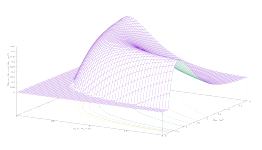
Nick Hillier - https://unsplash.com/photos/assorted-numbers-photography-yD5rv8_WzxA
The following script performs the transposition of a matrix in Perl. Launched without arguments, the program transpose.pl prints the syntax for execution. In this case, we get the following output:
Usage: transpose.pl [ -p ] datafile
-p prints original matrix
The script requires one or two arguments. At least one valid file must be provided. The ‘-p’ option is optional and allows the original matrix to be printed to the terminal.
Create a sample matrix inside a file called ‘matrix’:
a b c d e f g h i j k l m n o
Now we can run the script by giving the name of the file we just created as an argument. Remember to give execute permissions to the file:
$ ./transpose.pl matrix a f k b g l c h m d i n e j o
Executed with the ‘-p’ option, we get the following result:
$ ./transpose.pl -p matrix Original matrix a b c d e f g h i j k l m n o Transpose matrix a f k b g l c h m d i n e j o
Below is the complete code:
#!/usr/bin/perl
use strict;
if ( @ARGV < 1 || @ARGV > 2 ) {
print
"Usage: transpose.pl [ -p ] datafile\n";
print " -p prints original matrix\n";
exit;
}
my ($r, @data, $n, $datafile, $print_original);
if ($ARGV[0] eq '-p') {
$print_original = 1;
$datafile = $ARGV[1];
} elsif ($ARGV[1] eq '-p') {
$print_original = 1;
$datafile = $ARGV[0];
} else {
$print_original = 0;
$datafile = $ARGV[0];
}
if ($print_original) {
print "Original matrix\n";
}
open(IN, $datafile);
$r = 0;
while (<IN>) {
next if ( /^\#/ || /^\%/ );
chop;
my @a = split(/\s+/);
$n = 0;
foreach (@a) {
$data[$n][$r] = $a[$n];
if ($print_original) {
print "$data[$n][$r] ";
}
$n++;
}
if ($print_original) {
print "\n";
}
$r++;
}
close(IN);
if ($print_original) {
print "\nTranspose matrix\n";
}
for (my $i = 0; $i < $n; $i++) {
for (my $j = 0; $j < $r; $j++) {
print "$data[$i][$j] ";
}
print "\n";
}







